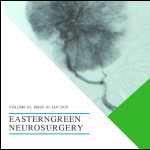Types of Neurosurgical Patients Requiring Tracheostomy- Institution Based Study
DOI:
https://doi.org/10.3126/egn.v2i1.27458Keywords:
head injury, Tracheostomy, Neurosurgical ICUAbstract
Background and purpose: Tracheostomy is common surgical procedure among neurosurgical patients who are ventilater dependent for prolonged period of time in neuro ICU. With the objective to analyzed various type of neurosurgical patients requiring tracheostomy this study was performed.
Material and method: This is a Crossectional , Analytical stydt with Non probability consecutive sampling over the duration of 2 years. Association between age vs categories of different pathologies and Gender is categories of different neurological pathologies were analysed using Chi square test/fishers exact test wherever applicable using SPSS20.
Result: There were total of 85 patients who underwent tracheostomy for various types of pathologies in our institute over the duration of two years. Mean age of patients who undergone tracheostomy was 45.26 ( SD 18.9) years and they ranged between 8 and 86 years. Among all these categories head injuries accounted for 45% of cases followed by ICH (28%).
Conclusion: Head Injury and intracerebral hemorrhage seems to be the common pathology requiring tracheostomy in tertiary neurosurgical centre. Young and male patients are more predominant in this study.




